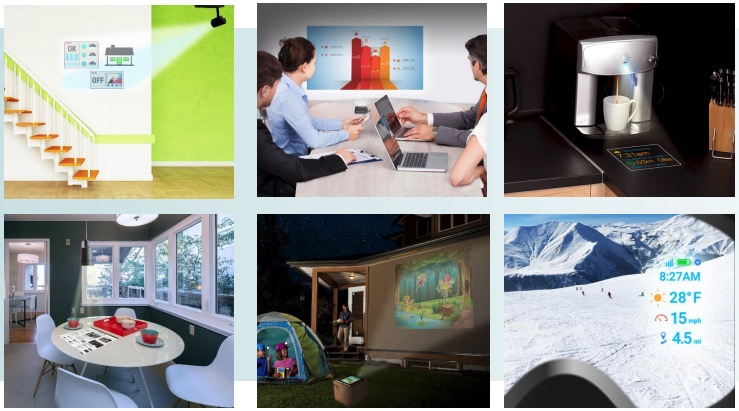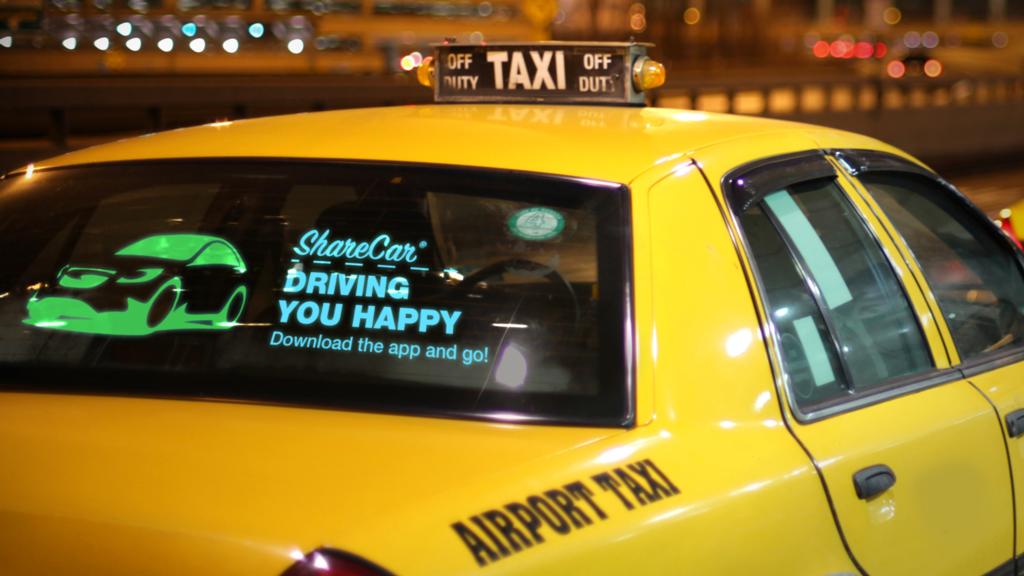
How About Projection Systems So Small They Could Be Part Of Merchandising Displays?
March 29, 2022 by Dave Haynes
Texas Instruments is marketing a new line of teeny projection modules, with vary brightness levels and resolutions, that are touted for applications like consumer appliances but could, in theory, be useful for some commercial digital signage applications like product displays.
The newest DLP digital micro-mirror device (DMD), says TI, reduces the projection module size by up to 80% compared to previous DLP offerings.
The new 0.16-inch DLP160CP DMD is a good fit for any application that requires an extremely compact projection system to create bright and crisp video or informational images on virtually any surface. Now you can seamlessly design that on-demand projection display into your next-generation Internet of Things appliance, autonomous robot or AR glasses, along with many other applications.
If you read a lot of tech stuff online, or got to shows like CES, you may have seen through the years products here and there that projected visuals from little stand-up devices on to physical desktops and counters. This is pretty much the evolution of that sort of thing, in one iteration, but smaller, brighter, crisper, etc.
So instead of the many costs and complexities associated with getting a flat panel display embedded in something like a merchandising table-top, the surface could just be wood or plastic and one of these teeny units could project on it, and with sensors be interactive. Companies like Perch Interactive have done similar work, for years, using larger projectors pointing down to merchandising tables.
The qualifier here is brightness. From what I can tell, you need the right conditions for these projections to be visible, and the demo images from TI are, well, optimistic. TI’s own spec sheets say the “Small 0.2” DLP chips designed for up to 300 lumens (out of the projector).”
Big HOWEVER … 300 lumens is NOT bright. Anyone who has got up to turn meeting room lights down so people could see what was coming out of a 1,500 lumens office projector will know 300 is going to, visually, be pretty damn feeble.
Then again … just about everything tech gets better with time – and in the case of projectors, brighter and smaller – so the concept of having projection equipment easily hidden, and visuals just appearing, is quite interesting.
There’s also a suggestion of using these as a variant on heads-up displays for auto – with projection modules instead putting messaging on the rear windows of taxis. This would be wildly easier and less costly than applications already out there, like LED taxi toppers or transparent LED film on rear windows. IF bright enough, and they definitely would not be in daylight hours.




Remember that lumens is the amount of light. The perceived brightness depends on the screen size – over a big screen there’s not much light per sqcm, but for a small screen, maybe half a sqm it would be a decent brightness.
It also depends on the spread of the light. For a heads up display in a car you know where the viewer is, so you can use lenses to direct all the light towards them and not waste any at the sides.
Good point about concentrating the light!